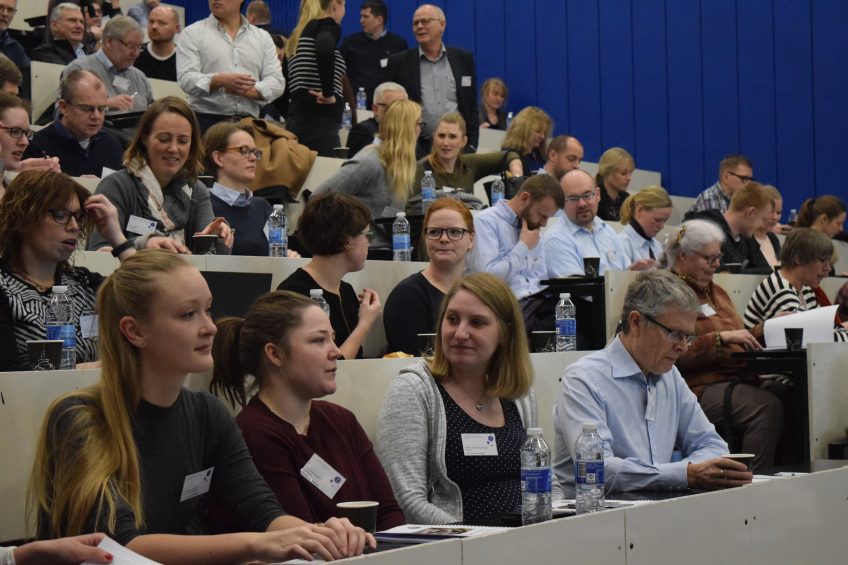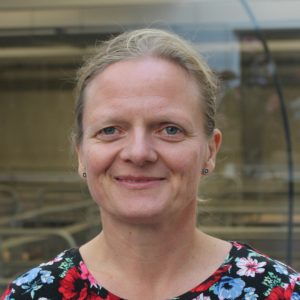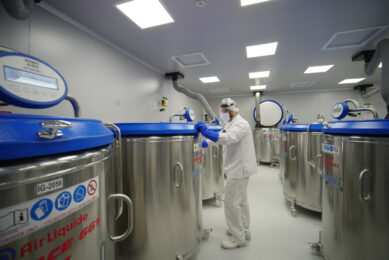Getting up-to-date with pig research

Denmark is one of the leading pig states in the world, so what’s important to Denmark will become important for the rest of the world sooner or later. What keeps Denmark’s pig scientists busy these days? Expert Vivi Aarestrup Moustsen sums up her experiences from a key pig meeting in Copenhagen.
Can we reduce feed consumption in gilts and sows without negatively affecting production and longevity? Have high prolific sows an increased demand for nutrients for milk production? Can we detect early warning signs of tail biting outbreaks in weaner pigs with undocked tails? Does the use of zinc have an impact on post-weaning diarrhoea and the treatment with antibiotics? What is cost of eradication of livestock-associated MRSA in Danish pig herds? What are the perspectives on implementation and use of game based learning in the Danish veterinary education?
Questions raised for pig seminar
These were some of the questions raised at the 4th annual CPH Pig Seminar at the University of Copenhagen (UCPH). The seminar was attended by more than 170 people who within a few hours were brought up-to-date with selected research results – and not the least with the good examples of the possible benefits of university and industry working closely together when solving complexes issues of relevance for the industry.
The seminar included sessions on sows and piglets, health and welfare, breeding and modelling and methicillin-resistant Staphylococcus aureus (MRSA).
Feed is costly in pig production
Feed is the largest single cost in pig production. In addition, there has been an increase in feed consumption in Danish sow herds – likely to lead to further increase in cost. The increase in feed consumption is caused by increased litter size but also because of increase in sow dimensions leading to increased feed requirements for maintenance. So therefore the question – can we produce smaller gilts without negatively affecting production and longevity?
Post doc Pia Brandt (UCPH) presented the results of a collaboration project between University of Aarhus, UCPH and SEGES Danish Pig Research Centre where the effect of protein level and feeding strategy on live weight, back fat thickness and fat-percentage in gilts were studied. So far the results are promising – and it’s possible to design a smaller gilt with a higher fat-percentage by manipulating the protein:energy ratio without compromising the production.
Feeding highly prolific lactating sows
How then to feed highly prolific lactating sows in order to meet their nutritional needs? This was discussed by PhD student Anja V. Strathe (UCPH) who presented her results regarding impact of increased dietary amino acids for lactating sows on sows and piglet performance.
The conclusions included that increased dietary protein led to higher milk yield, milk protein and fat, higher average daily gain for the litter – and lower bodyweight loss for the sows, lower mobilisation of body protein and increased fat mobilisation. Since gilts are not fully grown at farrowing, it was suggested to differentiate feed for first and for multiparous sows.
Using zinc in post-weaning piglets
The use of zinc post-weaning is being discussed across Europe, including that the current level may be problematic because it leads to an increase in the soil concentrations where pig slurry from weaner production is applied and that the increase in soil concentration is beyond the possible uptake by plants.

However, results presented by chief consultant Niels J. Kjeldsen, SEGES Danish Pig Research Centre, showed that the use of zinc post-weaning reduced the treatments with antibiotics and it was not possible to obtain the same results if zinc was replaced with different additives.
Tail biting and pig welfare
Tail biting occurs and it’s often difficult to predict and when it occurs it can lead to severe welfare issues and financial losses. In order to reduce the risk of tail biting outbreaks PhD student Helle Pelant Lahrmann, attached to the UCPH and SEGES Danish Pig Research Centre, studies early warning signs of tail biting outbreaks in weaner pigs in a project collaboration between UCPH, SEGES Danish Pig Research Centre and Scottish Agricultural College.
In the study, tail biting has been scored regularly and then video recordings from the day prior to a registered tail biting outbreak is being analysed to determine possible characteristics the biter, the bitten and neutral pigs in relation to the tail directed behaviour by the biter, the reaction of the victim and the tail postures. The results are promising and next step is to identify actions that can be applied when early warnings signs are observed so a severe outbreak can be avoided.
Eradication as control measure for LA-MRSA
A different subject addressed at the CPH up-to-date seminar was cost evaluation of eradication as a control measure for LA-MRSA in Danish pig herds presented by post doc Francisco Fernando Calvo Artavia, National Veterinary Institute. The cost of eradication was estimated to be €743 million – and then there would still be a risk of re-introduction. So it was suggested to evaluate other measures of control…
Another aspect of research presented was if the way teaching occurs at many universities is the best way to ensure uptake and understanding by the students. PhD student Camilla Kirketerp (UCPH) presented how game-based learning can be beneficiary for veterinary education.
For further information the book of presentations from the seminar can be downloaded from the CPH pig website.











